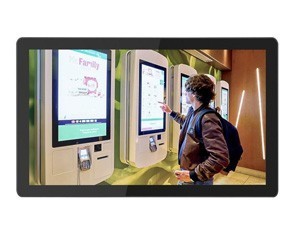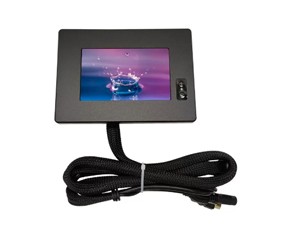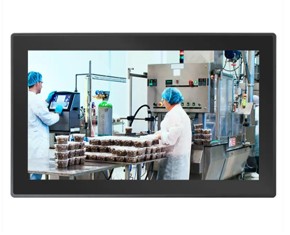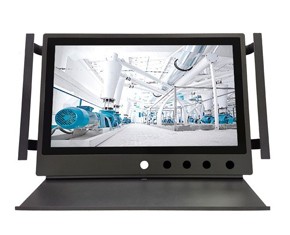Nov. 15, 2024
Open frame touch monitors are versatile displays widely used in kiosks, ATMs, medical devices, and industrial equipment, among other applications. Their customizable design allows easy integration into custom enclosures, making them ideal for both commercial and industrial use. However, with the variety of options available, choosing the right open frame touch monitor can be challenging. This guide will help you understand what to look for to make an informed purchase.
An open frame touch monitor is a touchscreen display without an external casing or frame. Instead, it’s designed to be mounted into custom enclosures or machinery, making it highly adaptable for specific applications. Unlike standard monitors, open frame monitors offer flexible integration options and can be used in both public-facing and industrial settings.
These monitors come in various sizes, screen resolutions, touch technologies, and connectivity options, allowing businesses to select the best fit for their unique requirements. SHINHO Open frame touch monitors adopt multi-points PCAP touch panel, high sensitive and fast-response. Covered with 2mm tempered glass for vandalproof.
When selecting an open frame touch monitor, there are several key features you should consider to ensure it meets your operational needs:
The screen size is crucial depending on the application. For customer-facing installations like kiosks, a larger screen (over 17 inches) can be ideal, while smaller sizes may be sufficient for industrial machinery displays. The resolution is also essential, as it affects the clarity and detail of the display. High-definition options such as 1080p or higher are preferable for applications that require sharp graphics or fine text.
Different touch technologies can significantly impact the user experience. Popular touch options include:
Capacitive Touch: Known for responsiveness and multi-touch capabilities. It’s ideal for public use as it is highly durable and scratch-resistant.
Resistive Touch: Works with any touch object and is often used in industrial applications. While less sensitive than capacitive, it’s more resistant to dust and water.
Infrared and Optical Touch: These provide high durability and are suitable for larger displays. They’re less affected by environmental factors like dust and humidity.
Choose a technology that aligns with your environment and user interaction requirements.
Brightness and viewing angles are particularly important for outdoor or brightly lit environments. Higher brightness levels (300 nits or more) are recommended for outdoor use or in areas with a lot of ambient light. Wide viewing angles ensure that the display is readable from different positions, which can improve user experience in customer-facing applications.
For environments with harsh conditions, such as industrial sites, durability is key. Look for monitors with durable, rugged frames, and those that are rated for dust, water, and impact resistance. Industrial-grade open frame touch monitors often come with IP ratings, which indicate the level of protection against solids and liquids.
Ensure the monitor has the necessary connectivity options for easy integration with your system. Common ports include HDMI, VGA, DVI, USB, and DisplayPort. USB is typically used for touch interface connections, while HDMI or VGA handles video input. Check your system requirements to choose a monitor with compatible ports.
Open frame touch monitors offer unique advantages compared to standard monitors:
Customizable Integration: Their open-frame design allows easy installation in various enclosures, making them adaptable to custom applications.
Durability: Many open frame monitors are built to withstand challenging environments, making them suitable for industrial and outdoor use.
Enhanced User Interaction: Touch capabilities improve user experience in interactive applications, from kiosks to point-of-sale systems.
Here are some common questions people have when considering open frame touch monitors:
Open frame monitors lack an outer casing, allowing them to be embedded in custom enclosures. They are also generally more rugged, making them suitable for specific environments like kiosks and industrial machinery.
Yes, but they need to have high brightness levels and weather-resistant protection, such as an IP rating, to withstand outdoor conditions.
For customer-facing applications like kiosks, a screen size of 17 inches or larger is generally recommended. The size you choose should consider visibility, touch interaction space, and available kiosk enclosure dimensions.
Resistive touch technology is often preferred for industrial applications because it works well with gloves and is less affected by dust or water. However, for high-precision tasks, capacitive touch may also be suitable.
Open frame touch monitors are versatile and powerful solutions for a range of commercial and industrial applications. By carefully selecting based on factors like size, touch technology, brightness, and durability, you can find the perfect monitor to enhance user interaction and improve operational efficiency. Remember to consider your environment, intended use, and connectivity needs when making your choice.
Searching for a Open frame touch monitors Manufacturer in China? SHINHO is Your Best Selection!



Capacitive Vs Resistive Touch Screens: When to Choose?
Mar. 14, 2025

How to Choose Capacitive Touch Monitors
Dec. 27, 2024